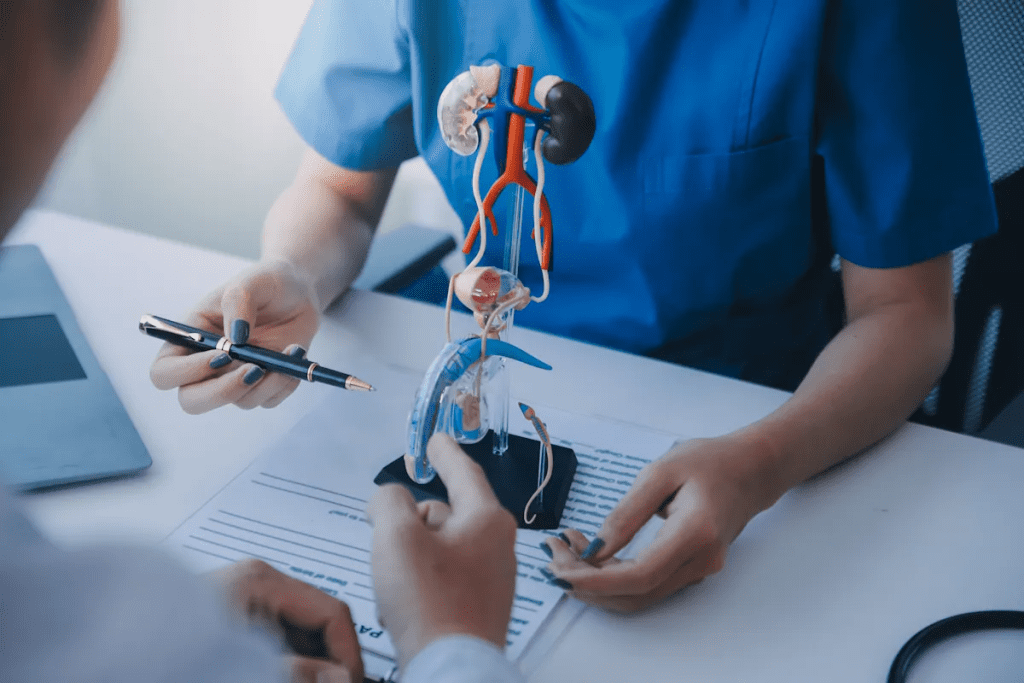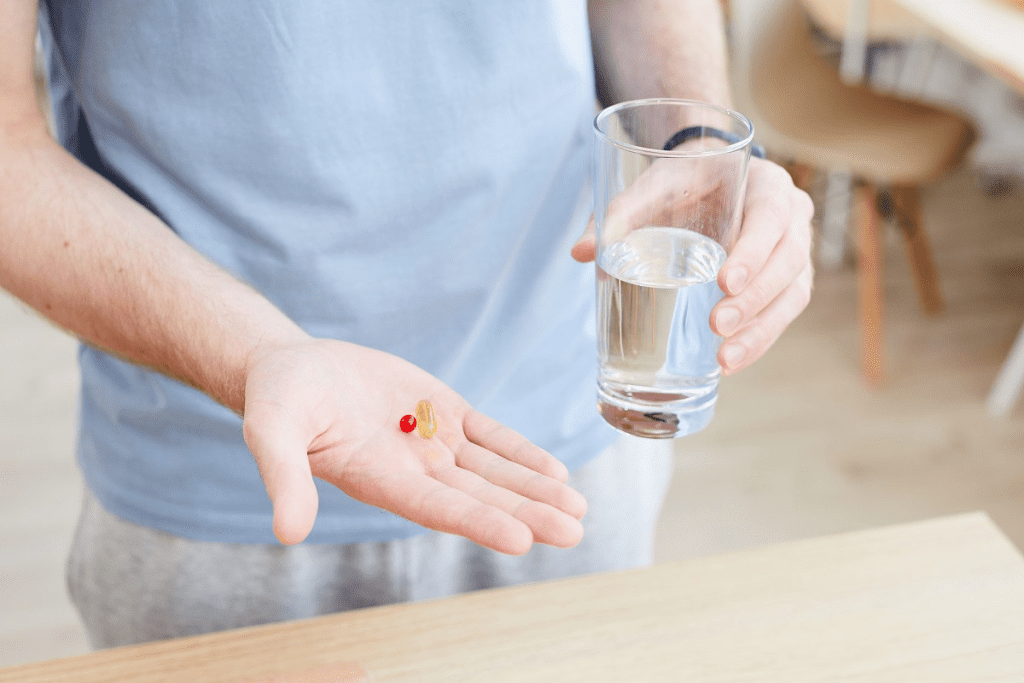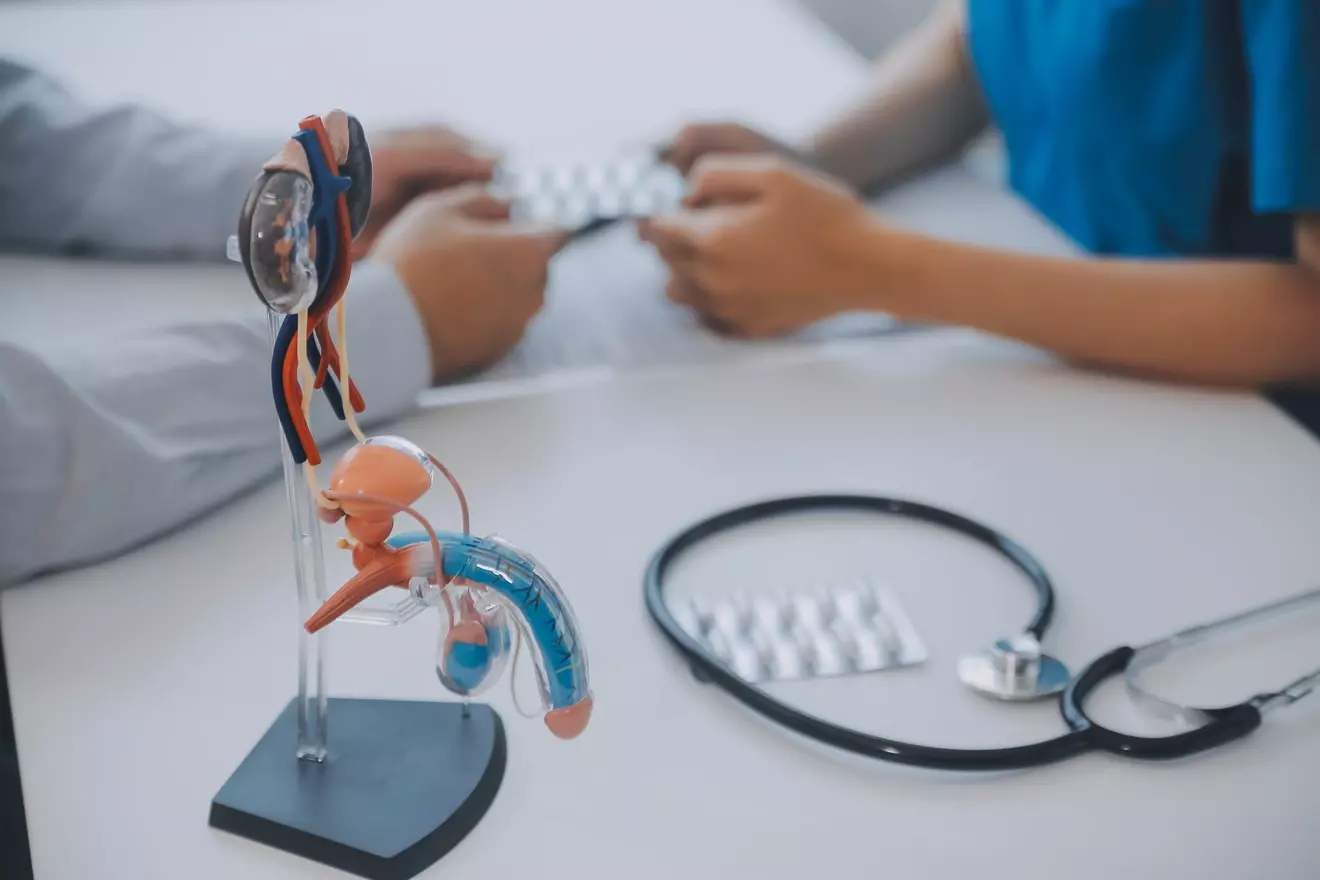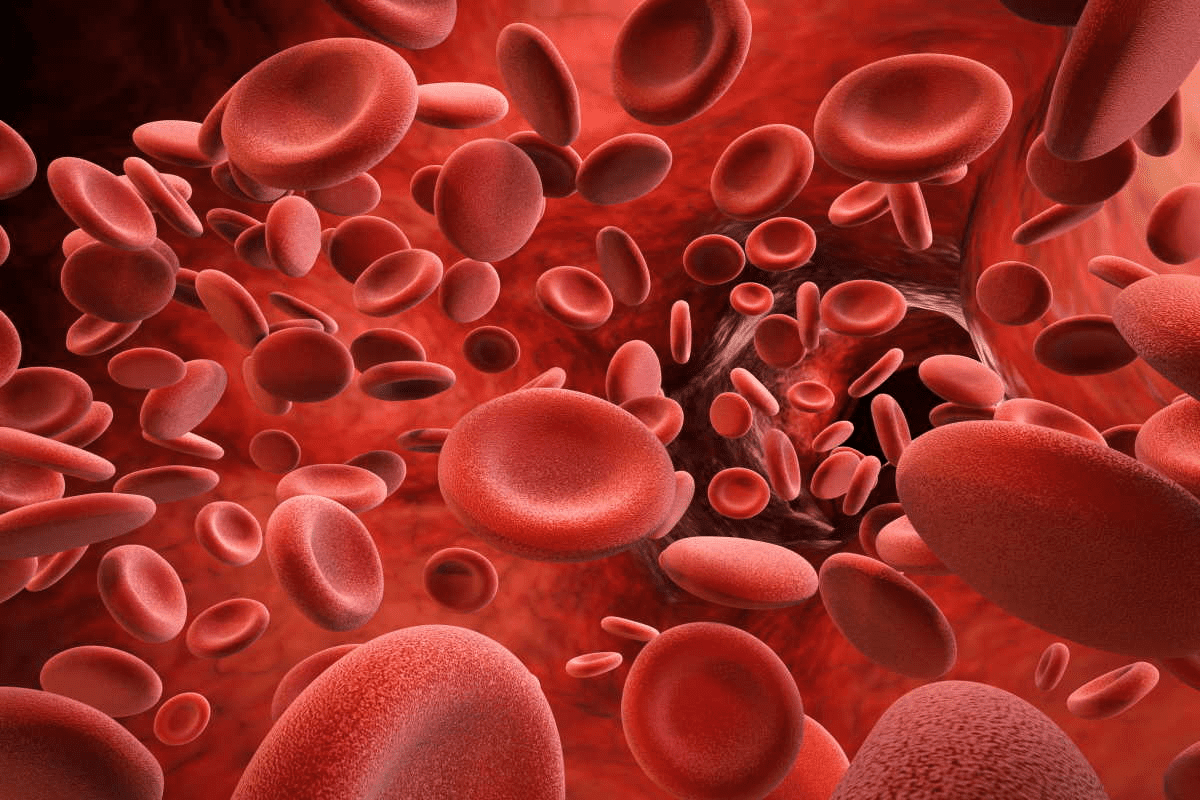Last Updated on November 26, 2025 by Bilal Hasdemir

Prostate enlargement warning signs are important to recognize early. Nearly half of men aged 50 and above face prostate issues, and enlargement is a common problem. Spotting the early symptoms can help prevent serious health complications and improve quality of life. Ignoring prostate enlargement can lead to discomfort, urinary problems, and other health risks. Understanding these prostate enlargement warning signs allows men to seek timely medical advice and maintain better prostate health.
Key Takeaways
- Frequent urination is a common symptom.
- Difficulty starting urination can be a warning sign.
- Weak or interrupted urine flow may indicate enlargement.
- Frequent urination at night is a significant indicator.
- Seeking medical attention early can prevent complications.
Understanding Prostate Enlargement
It’s important to know about the prostate gland and its role. The prostate gland is a small, walnut-sized organ. It’s key to the male reproductive system.
What is the Prostate Gland?
The prostate gland is below the bladder and surrounds the urethra. The urethra carries urine out of the body. It mainly makes seminal fluid to help sperm during ejaculation.
The gland has glandular, fibrous, and smooth muscle tissues. These work together for its functions.
The normal prostate gland is like a walnut. But it can grow with age, causing urinary issues. Key functions of the prostate gland include:
- Producing seminal fluid to nourish sperm
- Regulating urine flow through the urethra
- Playing a role in the male reproductive system’s overall health
Benign Prostatic Hyperplasia (BPH) Explained
Benign Prostatic Hyperplasia (BPH), or enlarged prostate, happens when the prostate grows. This can block urine flow. It’s common in older men and can cause urinary symptoms.
BPH is not cancer, but it can greatly affect a man’s life if not treated.
The progression of BPH can be influenced by various factors, including:
- Aging: The risk of developing BPH increases with age.
- Hormonal changes: Changes in hormone levels, like testosterone and estrogen, can cause prostate growth.
- Family history: Men with a family history of BPH are more likely to get it.
Knowing about BPH and its symptoms is key. This helps men get the right medical care and manage their condition well. Common signs include needing to pee a lot, weak urine flow, and needing to pee at night.
How Common is Prostate Enlargement?
Prostate enlargement, or Benign Prostatic Hyperplasia (BPH), is common among men, mainly as they get older. It’s a big health issue for older men.
Age-Related Statistics
Studies show BPH is closely linked to age. Here are some key findings:
- By 40, about 10% of men start showing BPH symptoms.
- By 60, this number jumps to around 50%.
- By 80, nearly 80% of men face symptoms due to prostate enlargement.
These numbers show how aging affects BPH. As men get older, more will face this issue.
Risk Factors for Developing BPH
Age is a big risk factor, but other things play a role too. Some of these include:
| Risk Factor | Description |
| Family History | Men with a family history of BPH are more likely to get it. |
| Lifestyle Factors | Being overweight, not exercising, and certain diets can raise BPH risk. |
| Medical Conditions | Diabetes and heart disease can also increase BPH risk. |
Knowing these risk factors helps in catching BPH early. A study found, “Spotting high-risk men early can lead to better treatment and life quality.”
“The prevalence of BPH and its impact on quality of life underscore the need for awareness and appropriate management strategies.”
By understanding BPH’s age and risk factors, men can work on keeping their prostate healthy.
The Anatomy of Prostate Enlargement
It’s important to know how prostate enlargement affects urine flow. The prostate gland is a small, walnut-sized organ. It’s key to the male reproductive system.
Normal vs. Enlarged Prostate
A normal prostate is about the size of a walnut and weighs 20 grams. But an enlarged prostate can grow much bigger. It can even double or triple in size.
This growth can press on the urethra. The urethra is the tube that carries urine from the bladder out of the body.
The main difference between a normal and enlarged prostate is size. But size isn’t everything. An enlarged prostate can make the urethra narrower. This affects how urine flows.
This condition, called benign prostatic hyperplasia (BPH), is common in older men.
How Enlargement Affects Urinary Function

When the prostate gets bigger, it can block urine flow. This leads to symptoms like a weak urine stream and needing to urinate often. Men may also feel like they can’t fully empty their bladder.
| Symptom | Description | Impact on Urinary Function |
| Weak Urine Flow | Reduced force of urine stream | Difficulty emptying the bladder |
| Frequent Urination | Need to urinate more often | Disruption of daily activities and sleep |
| Incomplete Bladder Emptying | Feeling of residual urine | Increased risk of urinary tract infections |
It’s key to understand these changes to diagnose and treat prostate enlargement well. By knowing the symptoms and their causes, men can get the right medical care. This helps ease their discomfort and prevents further problems.
Prostate Enlargement Warning Signs: An Overview
Signs of prostate enlargement often get worse over time. This means men need to be aware and act quickly. As men get older, they’re more likely to face symptoms of Benign Prostatic Hyperplasia (BPH). It’s key to know what these signs are.
The Progressive Nature of BPH Symptoms
BPH symptoms can start off mild but get worse if ignored. The progressive nature of BPH means symptoms can start off small but grow. This can disrupt daily life more as time goes on.
Spotting these signs early can help avoid bigger problems. It’s important for men to watch for changes in their urine and prostate health.
International Prostate Symptom Score (IPSS)
The International Prostate Symptom Score (IPSS) helps measure urinary symptoms from prostate issues. It helps doctors understand how BPH affects a patient’s life. This score guides treatment choices.
The IPSS looks at how often you pee, how urgent it is, and if you pee at night. It gives a full picture of a patient’s symptoms. This way, doctors can see how symptoms change and adjust treatment plans.
Knowing about the IPSS helps men take charge of their prostate health. They can work with doctors to manage symptoms better.
Warning Sign #1: Frequent Urination
Frequent urination can be more than a minor issue; it might signal a prostate problem. This symptom is common in men as they age. It’s a key sign of prostate enlargement.
Daytime Frequency Patterns
Daytime frequency means needing to pee more during the day. Adults usually pee 4 to 7 times in 24 hours. If you pee more often without drinking more, it could mean your prostate is enlarging. Watching your pee pattern can show if there’s a problem.
Impact on Daily Activities
Frequent urination can mess up your daily life. It can hurt your work, social life, and overall happiness. Men with this issue might plan their day around finding a bathroom. This is both hard and upsetting.
Distinguishing from Other Causes
Frequent urination can mean prostate enlargement, but it’s not the only reason. Diabetes, urinary tract infections, or too much caffeine can also cause it. So, seeing a doctor is key to find out why.
| Cause | Characteristics | Common Symptoms |
| Prostate Enlargement | Gradual increase in urination frequency, mostly with age | Weak urine stream, nocturia, trouble starting to pee |
| Diabetes | More thirst and pee because of high blood sugar | Fatigue, blurry vision, slow healing of cuts and wounds |
| Urinary Tract Infection | Sudden start, often with pain or burning while peeing | Cloudy or smelly pee, pelvic pain |
Warning Sign #2: Weak Urine Stream
A decrease in urinary flow rate is often linked to benign prostatic hyperplasia (BPH). This condition, characterized by an enlarged prostate, can significantly impact a man’s quality of life by affecting urinary function.
Changes in Urinary Flow

One of the earliest signs of prostate enlargement is a change in the urinary flow. Men may notice that their urine stream is weaker or less forceful than usual. This change can be gradual, making it sometimes difficult to recognize initially.
Key changes include:
- A reduction in the force of the urine stream
- A decrease in the distance that urine is projected
- A longer time required to empty the bladder
Hesitancy and Straining
In addition to a weak urine stream, men with an enlarged prostate may experience hesitancy or straining while urinating. Hesitancy refers to the delay in starting urination, while straining involves using abdominal muscles to help empty the bladder.
Hesitancy and straining can be uncomfortable and may indicate:
- Increased resistance in the urethra due to prostate enlargement
- Weakness in the detrusor muscle, which is responsible for bladder contraction
Progressive Nature of This Symptom
If left untreated, a weak urine stream can worsen over time. The progressive nature of BPH means that symptoms can gradually become more severe, potentially leading to more significant urinary retention issues.
Monitoring the progression of symptoms is key for:
- Early intervention
- Preventing complications such as urinary tract infections or bladder damage
- Improving quality of life through appropriate management and treatment
Warning Sign #3: Nocturia (Nighttime Urination)
As prostate enlargement grows, men often wake up to urinate many times at night. This disrupts their sleep. Nocturia is when someone wakes up to pee many times, hurting their sleep and health.
Sleep Disruption Patterns
Nocturia messes with sleep, making men wake up often. This can make them tired, less productive, and lead to health problems. Research shows men with BPH often have sleep issues because of nocturia.
Sleep Stage Affected: Nocturia usually wakes people up during deep sleep. This makes it hard to get good sleep.
Relationship to Fluid Intake
How much you drink before bed can affect nocturia. Drinking a lot or diuretic drinks before bed can make it worse. It’s wise to watch how much you drink, mainly before bed.
It’s key to keep an eye on how much you drink, if you have nocturia.
Impact on Quality of Life
Nocturia hurts your life and the lives of those around you. It can make you feel tired, lonely, and less healthy. It can also make you feel down and anxious.
| Aspect of Life | Impact of Nocturia |
| Sleep Quality | Significantly reduced due to frequent awakenings |
| Daily Productivity | Decreased due to fatigue and lack of restorative sleep |
| Mental Health | Increased risk of depression and anxiety |
| Social Life | Potential isolation due to fatigue and related issues |
It’s important to manage nocturia to improve life for men with an enlarged prostate. This means making lifestyle changes, watching your fluid intake, and sometimes getting medical help.
Warning Sign #4: Incomplete Bladder Emptying
Feeling like your bladder isn’t empty after you pee is a red flag. It might mean your prostate is too big. This can block urine flow, making you feel like you’re not fully emptying your bladder.
Sensation of Residual Urine
Feeling like there’s urine left in your bladder after you pee is common. It can make you need to pee more often. This feeling is often linked to Benign Prostatic Hyperplasia (BPH). The enlarged prostate blocks the urethra, making it hard to pee normally.
Complications of Retained Urine
Having urine left in your bladder can cause problems. It can lead to urinary tract infections (UTIs) and bladder stones. Bacteria can grow in the urine, raising the risk of infections. Also, concentrated urine can form stones, causing pain and trouble peeing.
To avoid these issues, it’s key to find out why you’re not emptying your bladder fully. Doctors might prescribe treatments to shrink the prostate or improve urine flow.
Self-Assessment Techniques
There are simple ways to check how bad your symptoms are. Keep track of how often and how much you pee. A voiding diary can help spot problems. Also, notice how strong your pee stream is and if you feel like you’re not emptying your bladder fully.
By noticing these signs, you can get medical help early. This might stop more serious problems from happening.
Warning Sign #5: Urgency and Difficulty Controlling Urination
Urgency and trouble controlling urination are big problems with an enlarged prostate. They can really hurt your life, causing pain and worry.
Sudden Urges to Urinate
Feeling sudden urges to urinate can be scary and disrupt your day. These urges can pop up anytime, making it hard to do everyday things or sleep well. The fear of leaking adds to the stress.
Incontinence Episodes
Incontinence episodes are embarrassing and might make you stay home more. Losing control of your bladder can happen when you cough, sneeze, or lift something heavy.
Psychological Impact
The mental side of not being able to control urination is big. Always worrying about finding a bathroom or fearing accidents can cause anxiety and stress. This can lead to feeling alone or depressed over time.
If you’re dealing with these issues, you should talk to a doctor. Getting the right treatment can help you feel better and live a happier life.
Complications of Untreated Prostate Enlargement
Prostate enlargement can cause many problems if not treated. These issues can make a man’s life much harder. They can range from simple urinary troubles to serious kidney damage.
Urinary Tract Infections
Urinary tract infections (UTIs) are common with an enlarged prostate. The prostate can block urine flow, leading to incomplete emptying of the bladder. This creates a perfect spot for bacteria to grow, raising UTI risks. Men with frequent UTIs might have an enlarged prostate.
Bladder Stones
Another issue with enlarged prostate is bladder stones. Stagnant urine in the bladder can cause minerals to form stones. These stones can hurt, make urination hard, and even cause infections.
Kidney Function Issues
Untreated prostate enlargement can harm kidney function. The blockage can push urine back into the kidneys, damaging them over time. This can weaken kidney function and, in bad cases, cause kidney failure.
Urinary Retention
Urinary retention is when you can’t fully empty your bladder. It can cause discomfort, trouble starting to urinate, and a weak urine stream. In serious cases, a catheter might be needed to clear the blockage.
Untreated prostate enlargement can lead to serious problems. It’s key to see a doctor if symptoms don’t get better or get worse. Early treatment can stop these issues and improve life quality.
- Urinary tract infections can be a recurring issue if the underlying prostate enlargement is not addressed.
- Bladder stones may require surgical intervention if they cause significant symptoms.
- Kidney function issues can often be reversed with timely treatment of the prostate enlargement.
- Urinary retention can significantly impact daily life and may require immediate medical attention.
Prostate Enlargement vs. Prostate Cancer: Symptom Differences
Prostate enlargement and prostate cancer share similar symptoms, causing worry for many men. Both affect the prostate gland but have different impacts and treatments.
Overlapping Symptoms
Prostate enlargement (BPH) and prostate cancer can both lead to urinary issues. These include:
- Weak or interrupted urine flow
- Frequent urination, often at night
- Difficulty starting or stopping urination
These overlapping symptoms make it hard to tell them apart without a doctor’s check-up.
Red Flags for Cancer
While prostate cancer and BPH share many symptoms, some signs point more to cancer:
| Symptom | Description |
| Blood in urine or semen | Presence of blood may indicate cancerous cells |
| Pain or burning during urination | Could be a sign of advanced prostate cancer |
| Erectile dysfunction | May be related to prostate cancer or its treatment |
Importance of Proper Diagnosis
Because symptoms of prostate enlargement and cancer are similar, getting a proper diagnosis is key. Tests may include:
- Prostate-Specific Antigen (PSA) test
- Digital Rectal Examination (DRE)
- Biopsy
- Imaging studies like MRI or CT scans
Early and accurate diagnosis is vital for effective treatment of both conditions.
Diagnosing Prostate Enlargement
Diagnosing prostate enlargement involves a mix of clinical checks and special tests. It’s key to get a correct diagnosis. This helps in choosing the right treatment and managing symptoms well.
Physical Examination
A physical check is the first step in finding out if you have prostate enlargement. This often includes a Digital Rectal Examination (DRE). A healthcare provider feels the prostate gland to look for any issues.
The DRE is a simple yet effective way to check the prostate size and find any problems. It’s often used with other tests to confirm prostate enlargement and its severity.
Laboratory Tests
Laboratory tests are important in diagnosing prostate enlargement and ruling out other conditions. Some common tests are:
- Prostate-Specific Antigen (PSA) Test: This blood test checks PSA levels. High levels can mean prostate enlargement or cancer.
- Urinalysis: This test looks for signs of infection or other urine problems.
These tests help doctors understand the cause of symptoms. They guide further tests to find the right diagnosis.
Imaging Studies
Imaging tests help see the prostate gland and check its size and shape. Some common tests are:
- Ultrasound: Uses sound waves to make images of the prostate and nearby areas.
- Magnetic Resonance Imaging (MRI): Gives detailed images of the prostate. It helps spot any oddities.
These tests are key in confirming the diagnosis and planning treatment.
Urodynamic Testing
Urodynamic tests check how well the bladder and urethra work. They help find any urine flow problems or other issues linked to prostate enlargement.
Tests like uroflowmetry and pressure flow studies measure urine flow rate and bladder pressure.
| Diagnostic Method | Description | Purpose |
| Digital Rectal Examination (DRE) | Physical examination of the prostate gland | Assess prostate size and detect abnormalities |
| Prostate-Specific Antigen (PSA) Test | Blood test measuring PSA levels | Identify possible prostate issues, like enlargement and cancer |
| Ultrasound | Imaging test using sound waves | See the prostate size and structure |
| Urodynamic Tests | Check urinary flow and bladder function | Find urine flow problems and other related issues |
Treatment Options for Enlarged Prostate
Men with an enlarged prostate have many treatment options. Each has its own benefits and possible downsides.
Medication Approaches
Several medications help manage enlarged prostate symptoms. Alpha-blockers relax muscles in the prostate and bladder neck, making it easier to urinate. 5-alpha-reductase inhibitors shrink the prostate over time.
Alpha-blockers quickly ease symptoms like weak urine flow and frequent urination. But, they can cause side effects like dizziness and low blood pressure when standing.
5-alpha-reductase inhibitors take longer to work but can lower the risk of serious problems like not being able to urinate at all.
Minimally Invasive Procedures
For those not wanting medication, there are several minimally invasive options. These include:
- Transurethral microwave therapy (TUMT)
- Transurethral needle ablation (TUNA)
- Laser therapy
These methods aim to reduce symptoms by targeting the prostate tissue that blocks urine flow.
Surgical Interventions
In severe cases or when other treatments don’t work, surgery might be needed. The most common surgery is transurethral resection of the prostate (TURP).
TURP removes parts of the prostate that block urine flow. It’s effective but can have risks like bleeding, infection, and affect sexual function.
Lifestyle Modifications
Changing your lifestyle can also help manage an enlarged prostate. Recommendations include:
- Limiting fluid intake before bedtime
- Avoiding caffeine and alcohol
- Exercising regularly
- Maintaining a healthy weight
| Treatment | Benefits | Potential Drawbacks |
| Medication (Alpha-blockers) | Quick relief from symptoms | Dizziness, orthostatic hypotension |
| Minimally Invasive Procedures | Less recovery time, fewer complications | May not be as effective for severe cases |
| Surgical Interventions (TURP) | High success rate for symptom relief | Risks of bleeding, infection, sexual dysfunction |
| Lifestyle Modifications | Non-invasive, promotes overall health | May not be sufficient on its own for severe symptoms |
When to See a Doctor About Prostate Symptoms
It’s important to know when to see a doctor for prostate symptoms. Prostate enlargement, or BPH, can cause a lot of discomfort and serious problems if not treated.
Urgent Warning Signs
Some symptoms mean you need to see a doctor right away. These include:
- Severe difficulty urinating: If you can’t urinate or it hurts a lot, get help fast.
- Blood in the urine: Seeing blood in your urine is a serious sign and needs quick attention.
- Frequent urinary tract infections: If you keep getting UTIs, it might mean there’s a problem with your prostate.
- Sudden severe pain: Pain in your lower belly or back that comes on suddenly could mean kidney damage.
Preparing for Your Appointment
Before your doctor visit, prepare by:
- Documenting your symptoms: Write down when and how bad your symptoms are.
- Listing your medications: Bring a list of all the medicines you’re taking.
- Noting any family history: Tell your doctor about any prostate problems or cancer in your family.
Questions to Ask Your Healthcare Provider
Ask these questions during your appointment:
- What is the likely cause of my symptoms?
- Are there any tests or examinations needed to diagnose the condition?
- What treatment options are available for my condition?
- Are there lifestyle changes that can help manage my symptoms?
- How often should I follow up with you to monitor my condition?
Being proactive about your health and getting medical advice on time can greatly improve your life and health outcomes.
Conclusion: Living with and Managing Prostate Enlargement
Living with prostate enlargement needs a full plan to handle its effects. Knowing the warning signs and symptoms is key to getting medical help on time.
Managing an enlarged prostate means making lifestyle changes, trying medical treatments, and sometimes surgery. A healthy lifestyle can help ease symptoms and boost quality of life.
The effects of an enlarged prostate on daily life can be big. But with the right care, men can cut down on how often they need to pee, improve urine flow, and lower the chance of serious problems.
It’s vital for people to team up with their doctor to create a treatment plan that fits them. This way, men with prostate enlargement can manage their condition well and stay healthy overall.
FAQ
What are the early symptoms of an enlarged prostate?
Early signs of an enlarged prostate include needing to pee a lot and having a weak stream. You might also wake up to pee a lot, feel like you can’t empty your bladder fully, or feel a strong urge to pee. These symptoms can really affect your daily life.
How is Benign Prostatic Hyperplasia (BPH) diagnosed?
Doctors use a few ways to find out if you have BPH. They’ll check your symptoms, medical history, and do a digital rectal exam. They might also do tests like lab work, imaging, and urodynamic testing.
What is the difference between prostate enlargement and prostate cancer?
Prostate enlargement, or BPH, is not cancer. But prostate cancer is a serious tumor. Both can make it hard to pee, but cancer might also cause pain, weakness, or other symptoms.
Can lifestyle modifications help manage prostate enlargement symptoms?
Yes, changing your diet, drinking the right amount of fluids, and training your bladder can help. Avoiding caffeine and drinking less before bed can also help.
What are the possible complications of untreated prostate enlargement?
If you don’t treat prostate enlargement, you might get urinary tract infections, bladder stones, or kidney problems. These can make it hard to pee and might need more serious treatments.
How does nocturia affect quality of life?
Nocturia can mess up your sleep, making you tired, less productive, and more accident-prone. It can also hurt your mental health, leading to anxiety, depression, and feeling down.
What is the International Prostate Symptom Score (IPSS)?
The IPSS is a tool doctors use to check how bad your pee problems are. It looks at how often you pee, how urgent it is, and if your stream is weak. It helps figure out how much your symptoms affect your life.
Can prostate enlargement cause urinary tract infections?
Yes, an enlarged prostate can make you more likely to get UTIs. This is because you might not empty your bladder fully, which can let bacteria grow. UTIs can make you feel like you’re burning when you pee, pee a lot, and hurt in your belly.
What are the treatment options for an enlarged prostate?
There are many ways to treat an enlarged prostate. You can take medicine, have a minimally invasive procedure, surgery, or make lifestyle changes. What you choose depends on how bad your symptoms are, your health, and what you prefer.
When should I see a doctor about prostate symptoms?
You should see a doctor if you pee a lot, have a weak stream, wake up to pee, or can’t start peeing. Also, if you pee blood, feel pain while peeing, or can’t pee at all, go to the doctor right away.
References
- American Urological Association. (2009). Early Detection of Prostate Cancer: AUA/SUO Guideline. https://www.auanet.org/guidelines-and-quality/guidelines/early-detection-of-prostate-cancer-guidelines






